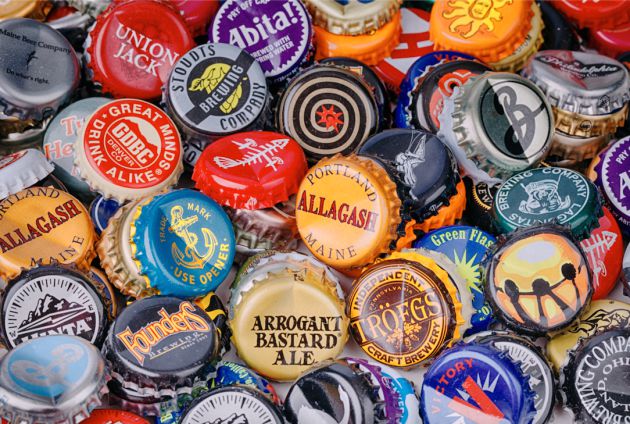
Europe ups its craft game as new leader of NPD
Europe is reclaiming its reputation as the hub of the beer world as it overtakes the US as the biggest driver of NPD in the craft segment. Jo Gilbert looks at the re-emergence of the world’s oldest beer market.
Until recently, the idea of premium beer had more to do with abv rather than the quality or the production methods behind the liquid.
But in the past decade craft beer has filled that gap, carving out a top tier that consumers are willing to pay more for and creating a buzz that has forced even the typically stubborn wine world to sit up and take notice.
Perhaps predictably, high-end, small-batch and expertly crafted beer, or craft beer, has been led by the US, where artisanal brands like 10 Barrel Brewing and Ballast Point caused such a stir they were snapped up by giants AB-Inbev and Constellation Brands, respectively.
The giants still control the biggest chunk of the market, which exceeds £84 billion ($107 billion) a year.
But craft breweries are no longer the Lilliputians of the beer world. They now make up 40 of the top 50 by volume in the US, according to the Brewers Association’s recently released 2017 statistics.
However, things continue to change. As the spark that ignited the craft beer revolution shifts, research shows the UK has become the gateway for migrating craft trends, with consumer surge in interest paving the way for innovation.
“Over the past few years, interest in craft beer has travelled from the US into the UK and now into continental Europe,” said Jonny Forsyth, associate director at Mintel Food & Drink. “Europeans are embracing craft beer because they are looking for new, more exciting offerings compared to their usual beer options, especially in markets such as Germany, where brewers and beer styles have remained unchanged for centuries.”
Things have changed quite rapidly over the past five years. Mintel places North America at the head of the global innovation in 2013, when the region accounted for 52% of all craft beer retail launches compared with just 29% for Europe. Since then, the story has flipped.
In 2017, 54% of launches originated in Europe and just 19% in North America. For Europe, that’s double the number of new launches compared with 2013.
While the US is still the single most innovative beer market globally, responsible for 17% of all global craft beer launches in 2017, six of the top 10 most innovative markets are now in Europe.
This includes the UK, which comes in third, cementing its place as one of Europe’s most mature markets for the production and consumption of craft beer.
↓
Changing with the times
Such are the numbers. But there are plenty of examples that show the rising tide of interest in craft beer on the Continent.
Bar Convent Berlin is one. This year saw the launch of the event’s inaugural beer soapbox, Brew Berlin, which aimed to reflect the reality that craft beer is increasingly “winning over consumers with quality and uniqueness” across Europe.
A number of US-based companies are also now chasing the growing number of opportunities in Europe with a number of transatlantic partnerships. This is the case with Spanish brewer Mahou San Miguel, which bought a strategic 30% stake in US craft brewery Founders a few years ago.
Meanwhile, US importer MHW recently launched a new platform specifically to open up the European market for American wine, beer, cider and spirit producers looking to crack the export market.
Operating through a logistics hub in the Netherlands and with additional expertise in the UK, the new platform marks the first step for the company’s global expansion plan, with Templeton Rye earmarked as the first brand to land in Europe.
Comprising around 29% of the beer market (Euromonitor 2016), Gabe Barkley, chief executive of MHW, said Europe is a “pivotal player” in the development of beer globally.
He added: “As with many major geographies, Europe has seen the share of beer in the overall beverage alcohol mix decline slightly over the past 10 years. That said, we have seen craft beer continue to increase in importance in the EU with total volume of over 4% and expected growth of 11.2% by revenue through to 2021.”
The UK has been leading the pack in Europe in terms of consumption, he said, “with a current market share of 16.5% and an expected CAGR of 13.3% from 2016 to 2021 [TechNavio]. This shift to craft in Europe, similar to the shift that has preceded it in the US, is largely driven by consumer demand to try new and premium products.”
↓
Playing catch-up
Europe is now on a mission to catch up with itself. Although the region has been making beer for centuries, it has taken a new market with new ideas to breathe new life into it.
Change and the willingness to adapt is something Harpers’ regular Jerry Lockspeiser honed in on in his latest column.
With wine, he said, “Too many companies were caught frozen like rabbits in the headlights by the success of craft beer, staring in awe as it captured the hearts of the terrabyte generations. They were frozen again watching the explosive success of craft gin.”
It’s often said wine is waiting for its “craft beer moment”. Wine is not beer. There are plenty of complex, quality wines on the market already, without the headroom beer had 15 years ago to make improvements.
As beer has something of a homecoming, and gin innovation edges up UK exports to £532 million, now is an interesting time for European drinks makers.





